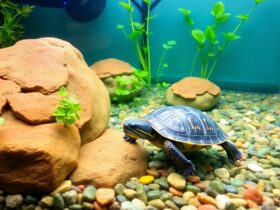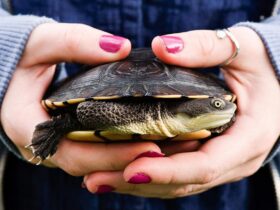So, you’re thinking about setting up a turtle pond? That’s awesome! Turtle ponds can be a fun and peaceful addition to your backyard. They offer a nice little escape and a chance to watch these cool creatures in their own space. But before you jump in, there’s a lot to think about. From picking the right spot to choosing the perfect turtles, it’s a whole process. Don’t worry though, this guide has got you covered.
Understanding Turtle Ponds
What is a Turtle Pond?
A turtle pond is a specially designed outdoor water feature that provides a safe and suitable environment for turtles to live and thrive. These ponds mimic the turtles’ natural habitat, offering them plenty of space to swim, bask, and explore. They can vary in size and complexity, from simple garden ponds to elaborate setups with waterfalls and plants. Having a turtle pond in your backyard is like inviting a slice of nature into your home. It’s not just about the turtles; it’s about creating a little ecosystem.
Benefits of Having a Turtle Pond
Creating a turtle pond can be rewarding for several reasons:
- Educational Experience: Watching turtles in their habitat can teach us about their behaviors and life cycles.
- Environmental Impact: Turtle ponds can support local wildlife by attracting birds, insects, and amphibians.
- Relaxation: The calming sound of water and the sight of turtles gliding through the water can be a great stress reliever.
- Biodiversity: These ponds can host a variety of plants and animals, contributing to a more diverse garden ecosystem.
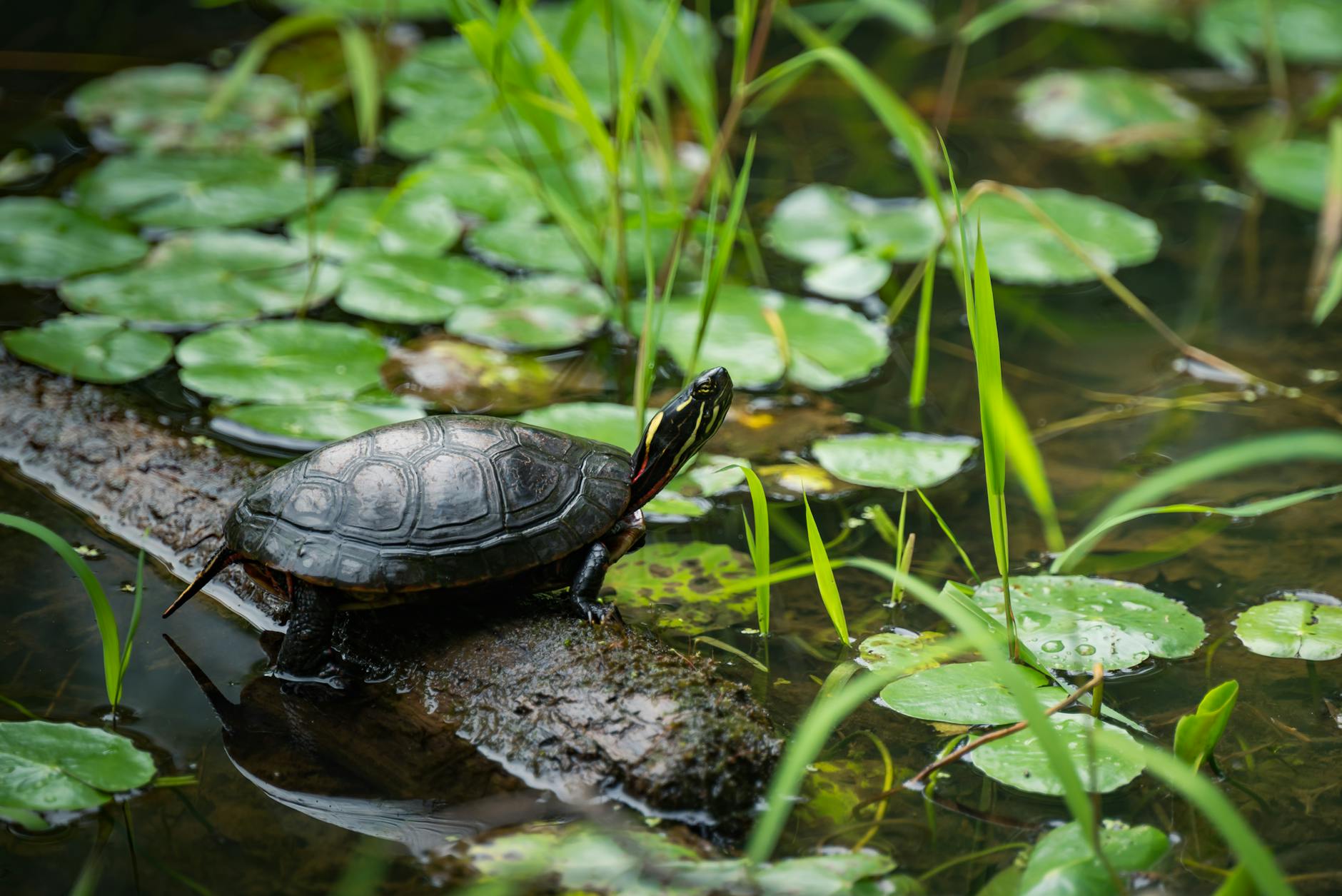
Common Misconceptions About Turtle Ponds
There are a few myths surrounding turtle ponds that need to be cleared up:
- Turtle Ponds are High Maintenance: While they do require regular care, a well-designed pond with the right filtration system can be relatively easy to maintain.
- Turtles Destroy Plant Life: While turtles might nibble on some plants, they can coexist with a variety of aquatic plants that are resilient and beneficial to the pond.
- All Turtles are the Same: Different turtle species have different needs. It’s important to research and choose the right type of turtle for your pond.
Setting up a turtle pond is more than just a hobby; it’s a commitment to creating a sustainable environment for these fascinating creatures. Watching them bask in the sun or dive into the water is a joy that brings a sense of peace and connection to nature.
For more insights on creating the perfect habitat for your turtles, check out our essential information on setting up a turtle tank. This guide covers everything from turtle diets to comprehensive care.
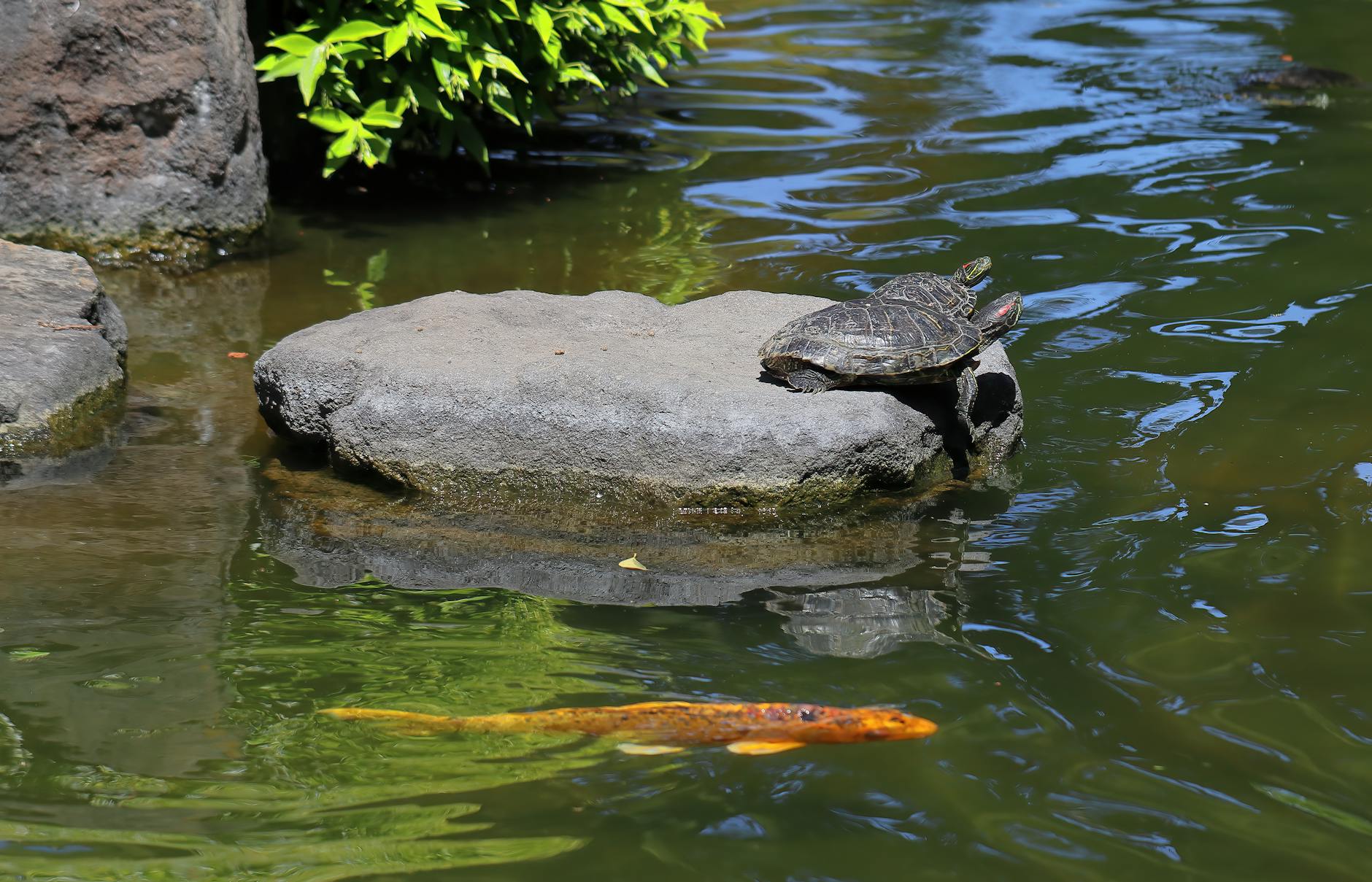
Designing Your Turtle Pond
Choosing the Right Location
Picking the perfect spot for your turtle pond is crucial. You want somewhere that gets a good mix of sun and shade. Turtles need sunlight for basking, but too much can heat the water too quickly. Also, think about proximity to your house for easy access and maintenance. Avoid areas with too many trees, as falling leaves can mess with the water quality.
Essential Features of a Turtle Pond
A well-designed turtle pond has a few key features. First, make sure it’s deep enough—around 18-24 inches is ideal for most turtle species. You’ll also need a filtration system to keep the water clean. A good pond should have both shallow and deep areas, allowing turtles to swim and rest comfortably. Don’t forget to include a basking area above the waterline where they can dry off and soak up some rays.
Incorporating Natural Elements
Adding natural elements can make your turtle pond more inviting. Consider using rocks and logs for turtles to climb on and hide under. Plants are great too, both in and around the pond. They provide shade, help with water quality, and give turtles a more natural environment. Just be sure to choose non-toxic plants that won’t harm your turtles.
Designing a turtle pond is about balancing the needs of your turtles with your backyard’s aesthetics. With a bit of planning, you can create a space that’s both functional and beautiful.
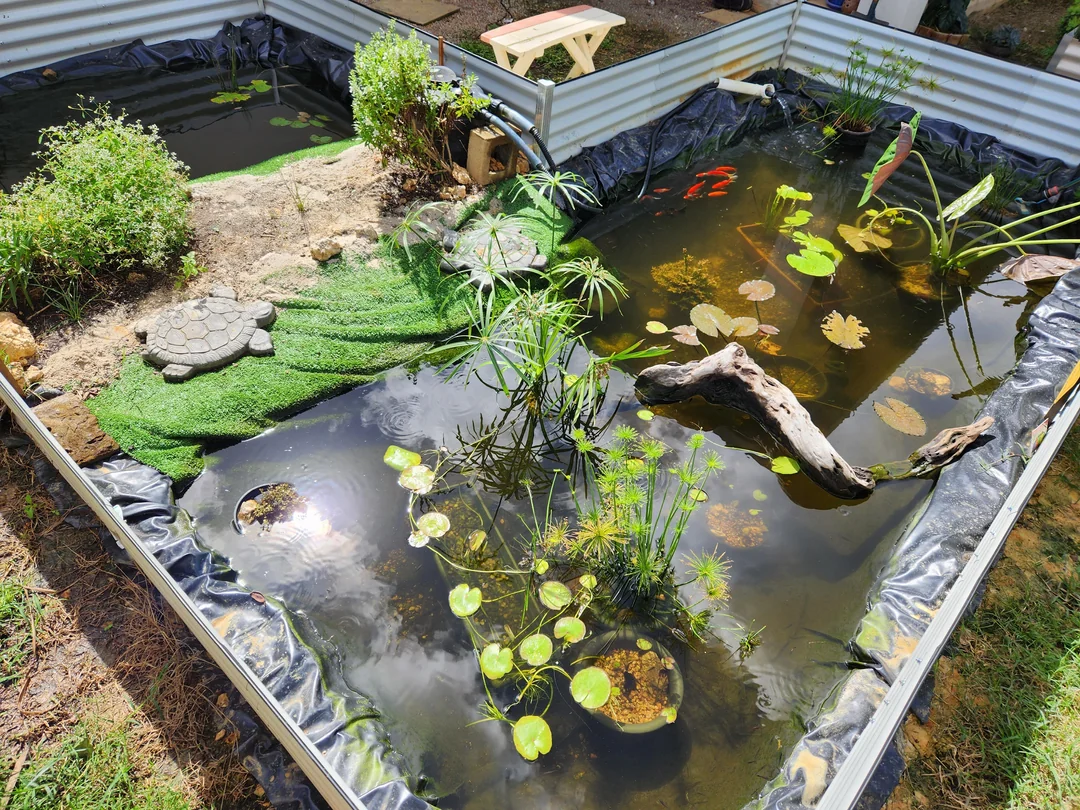
Selecting the Right Turtles for Your Pond
Popular Turtle Species for Ponds
When it comes to picking turtles for your pond, you’ve got options. Some turtles are more suited for pond life than others. Red-Eared Sliders, for instance, are a popular choice. They adapt well to different environments and are pretty easy to care for. Then there’s the African Sideneck Turtle, known for its unique way of tucking its head sideways into its shell. Lastly, the Eastern Box Turtle is another favorite, though it requires a bit more attention and specific conditions.
Considerations for Turtle Compatibility
Before you introduce turtles to your pond, think about compatibility. Not all turtles get along. Some might be aggressive, while others are more laid-back. Consider the size of your pond too. A cramped space can lead to stress and fights. It’s a good idea to:
- Research each species’ temperament.
- Ensure there’s enough room for each turtle.
- Provide multiple basking spots to reduce territorial disputes.
Understanding Turtle Behavior
Turtles have their quirks. They bask under the sun, swim around, and sometimes just sit still for hours. Understanding these behaviors helps in creating a suitable environment. Turtles are cold-blooded, so they need both warm and cool areas. They also enjoy hiding spots and areas to explore. Remember:
- Turtles need a balance of land and water.
- They require a basking spot with UV light.
- Regular observation helps in noticing any unusual behavior.
Selecting the right turtles isn’t just about picking the cutest ones. It’s about understanding their needs and ensuring they fit well with your pond environment. This not only makes your turtles happy but also enhances your pond experience.

Maintaining a Healthy Turtle Pond
Water Quality Management
Keeping your turtle pond clean is not just about aesthetics; it’s about the health of your turtles. Regular water testing is crucial to ensure your pond’s pH, ammonia, and nitrate levels are safe. Invest in a good filtration system to keep the water clear and healthy. Consider adding aquatic plants, which can help absorb excess nutrients and provide shade.
- Test water weekly for pH, ammonia, and nitrates.
- Clean filters monthly to maintain efficiency.
- Use dechlorinated water to prevent chemical exposure.
A well-maintained pond is a happy pond. Consistent care in managing water quality will keep your turtles thriving.
Feeding and Nutrition Tips
A balanced diet is key to a turtle’s health. Provide a mix of commercial turtle pellets, leafy greens, and occasional protein like insects or fish. Variety is important to ensure they get all necessary nutrients. Avoid overfeeding, as leftover food can pollute the water.
- Offer food daily in small amounts.
- Include calcium supplements to support shell health.
- Monitor their eating habits for any changes.
Preventing Common Health Issues
Turtles can be prone to specific health problems if their environment isn’t well-maintained. Watch for signs like shell discoloration or unusual behavior. Regular health checks can catch issues early, preventing them from becoming serious.
- Observe turtles daily for any signs of distress.
- Maintain a basking area with proper UVB lighting.
- Keep the pond free of sharp objects that might injure turtles.
Healthy turtles are active turtles. By ensuring a clean environment and balanced diet, you help prevent many common ailments.
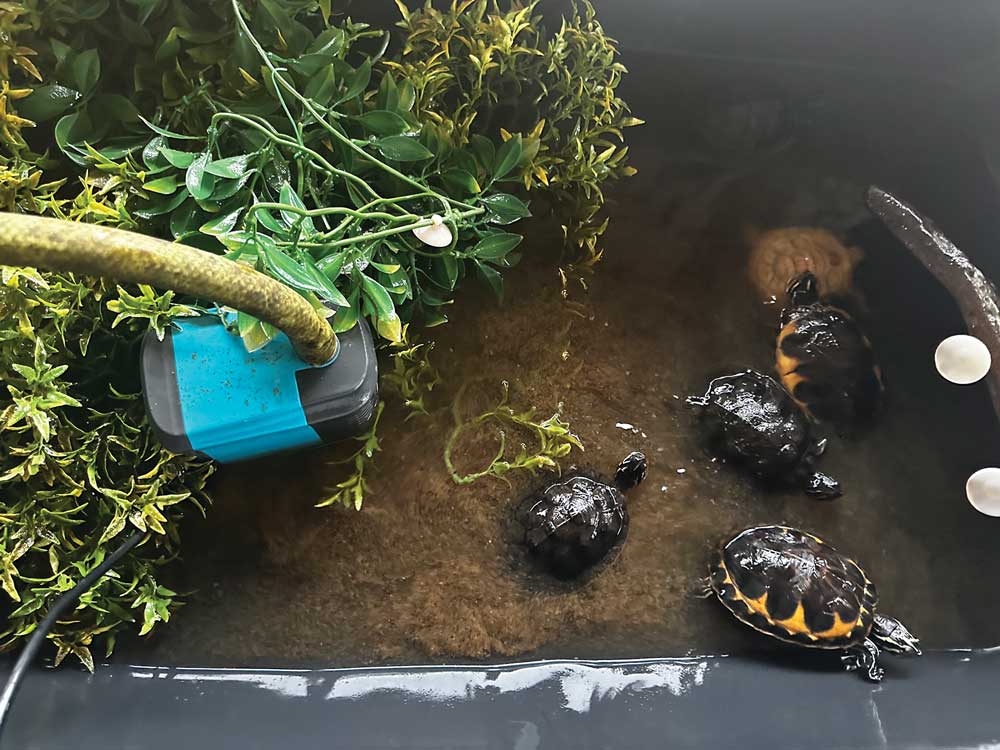
Enhancing Your Turtle Pond Experience
Adding Plants and Decorations
Transforming your turtle pond into a vibrant ecosystem can be a fun project. By adding plants, you not only beautify the space but also provide shaded areas and natural hiding spots for your turtles. Consider using aquatic plants like water lilies or duckweed. These not only look great but also help keep the water clean by absorbing excess nutrients. When it comes to decorations, opt for larger, sturdy pieces. These mimic natural habitats and offer your turtles a chance to explore. A few rocks or logs can double as basking platforms, giving your turtles a place to sunbathe.
Creating a Relaxing Environment
A turtle pond should be a peaceful retreat for both you and your turtles. Think about the ambiance. Adding a small waterfall or fountain can create soothing sounds and help with water circulation. Make sure there’s enough shade for your turtles to cool off, especially during hot days. You might also want to place a bench nearby, so you can sit and enjoy the view. Remember, a calm environment encourages turtles to exhibit their natural behaviors, making it more enjoyable for you to watch them.
Engaging with Your Turtles
Interacting with your turtles can be a rewarding experience. Start by observing their daily routines. You’ll notice they have distinct personalities and preferences. Try feeding them by hand occasionally; it’s a great way to bond. Just be sure to wash your hands afterward. You can also introduce some safe toys or floating objects in the pond to stimulate their curiosity. Engaging with your turtles not only strengthens your connection with them but also helps you understand their needs better.
A turtle pond is more than just a water feature; it’s a lively habitat that can bring joy and relaxation to your life. By thoughtfully designing and maintaining your pond, you create a space where both you and your turtles can thrive.
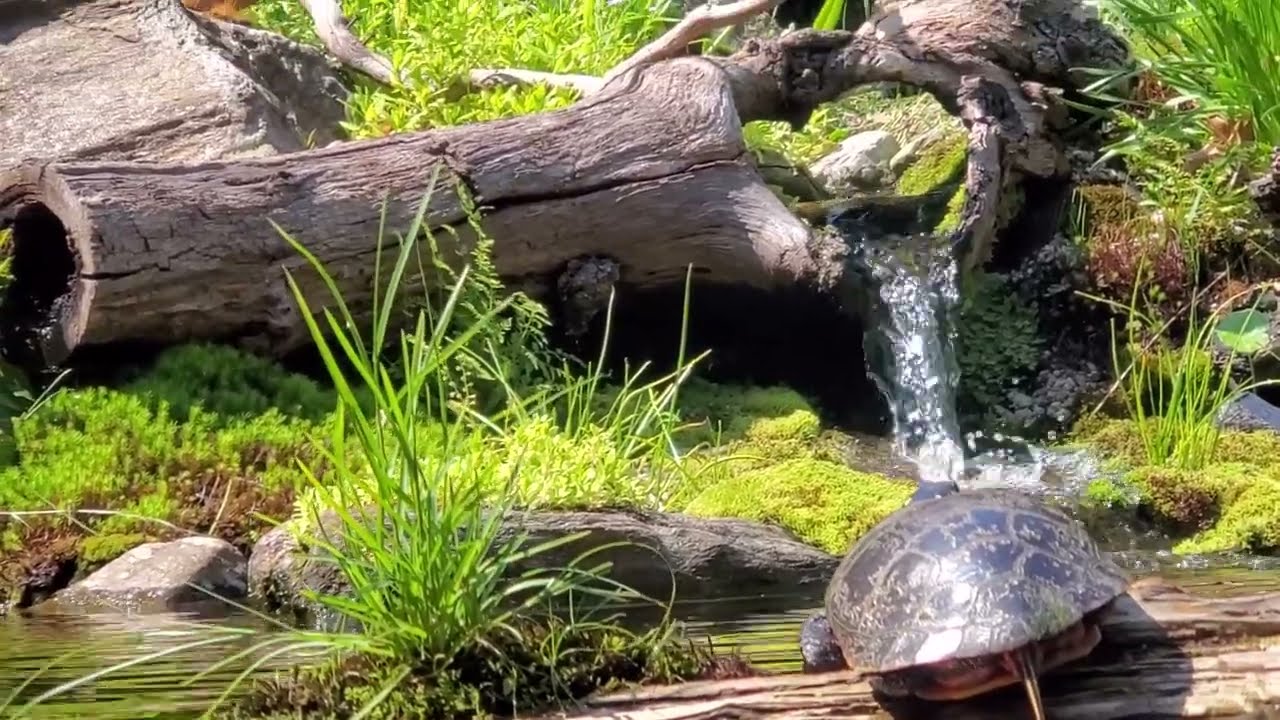
Seasonal Care for Turtle Ponds
Preparing for Winter Months
As the temperature drops, it’s important to get your turtle pond ready for winter. Turtles can be sensitive to cold weather, so ensuring their habitat is warm enough is key. You might want to invest in a pond heater to keep the water from freezing.
Here’s a quick checklist to help:
- Install a pond heater to maintain a stable temperature.
- Reduce feeding as turtles’ metabolism slows down.
- Ensure your turtles have a safe place to hibernate, like a mud bottom or a protected area.
Winter can be tough on your pond, but with the right preparation, your turtles can stay healthy and comfortable.
Summer Maintenance Tips
Summer is the time when your turtles are most active, and your pond will need some extra attention. Keep an eye on the water levels because they can drop quickly due to evaporation.
Some tips for summer care include:
- Regularly check and adjust water levels.
- Clean the pond to prevent algae build-up.
- Provide plenty of shade to protect turtles from extreme heat.
Adapting to Seasonal Changes
Each season brings its own set of challenges and adjustments. It’s crucial to adapt your care routine to ensure your turtles thrive year-round.
Consider the following:
- Monitor water quality regularly, adjusting filtration as needed.
- Adjust feeding schedules and portions based on the season.
- Watch for any changes in turtle behavior that might indicate stress or health issues.
By staying on top of these seasonal changes, you can create a thriving environment for your turtles all year long.
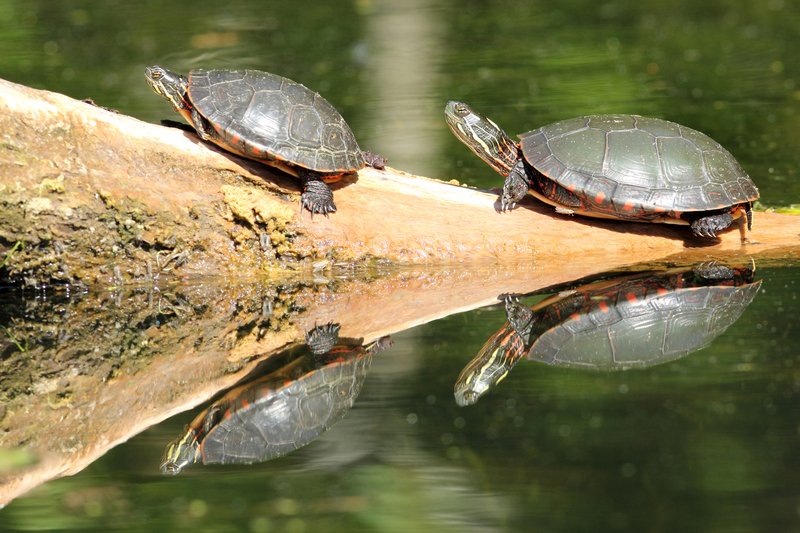
Troubleshooting Common Turtle Pond Problems
Dealing with Algae Overgrowth
Algae can turn your beautiful turtle pond into a green mess pretty quickly. Excessive algae isn’t just ugly; it can mess with water quality too. Here’s how you can tackle it:
- Shade the Pond: Adding floating plants can help reduce sunlight penetration.
- Regular Cleaning: Skim the pond surface and remove any visible algae weekly.
- Proper Filtration: Invest in a powerful filtration system to keep the water clean.
Addressing Turtle Aggression
Sometimes turtles don’t get along, and aggression can become an issue. To keep the peace:
- Space Matters: Ensure each turtle has enough room to swim and bask.
- Separate Feeding Areas: Feed turtles separately to avoid competition.
- Observe Behavior: Keep an eye on interactions and separate turtles if needed.
Solving Filtration Issues
A good filtration system is like the heart of your turtle pond. If it’s not working right, everything else can fall apart. Here’s what to do:
- Check for Clogs: Regularly inspect the filter for debris that might block water flow.
- Replace Filter Media: Change the filter media according to the manufacturer’s instructions to maintain efficiency.
- Monitor Water Flow: Ensure that water is circulating properly throughout the pond.
Keeping a turtle pond healthy requires attention to detail and a willingness to adapt. By staying on top of these common issues, you can create a thriving environment for your shelled friends.
So, there you have it, folks. Turtle Pond is more than just a spot on the map; it’s a little slice of nature where you can kick back and enjoy the simple things. Whether you’re there to watch the turtles do their thing or just to take in the peaceful vibes, it’s a place that offers a break from the hustle and bustle. Next time you’re looking for a chill day out, remember Turtle Pond. It’s got a bit of magic that you just can’t find anywhere else. Thanks for sticking around and happy exploring!
Frequently Asked Questions
What is the best size for a turtle pond?
The size of your turtle pond depends on the number of turtles you have. A good rule is to have at least 10 gallons of water for every inch of turtle shell. This gives them enough space to swim and explore.
How often should I clean my turtle pond?
Cleaning your turtle pond is important to keep your turtles healthy. You should check the water quality every week and do a partial water change every two weeks. A full cleaning can be done every few months.
Can I keep different turtle species together in one pond?
While some turtle species can live together peacefully, others might not get along. It’s important to research each species’ behavior and needs before putting them in the same pond.
What should I feed my pond turtles?
Pond turtles eat a mix of plants and proteins. You can feed them turtle pellets, leafy greens, and small insects. Make sure to give them a balanced diet to keep them healthy.
How can I prevent algae from taking over my turtle pond?
To control algae, you can add plants that compete for nutrients, use a pond filter, and avoid overfeeding your turtles. Algae-eating fish can also help keep the pond clean.
Do turtles need a basking area in their pond?
Yes, turtles need a place to bask in the sun. A basking area helps them regulate their body temperature and get the sunlight they need to stay healthy.
